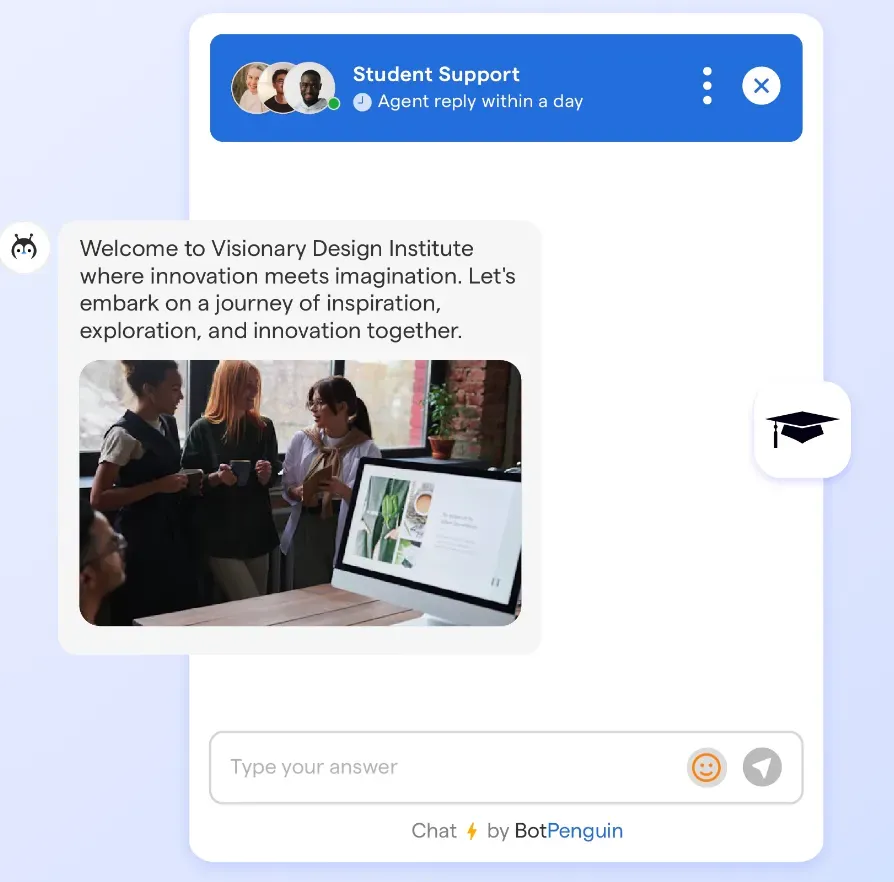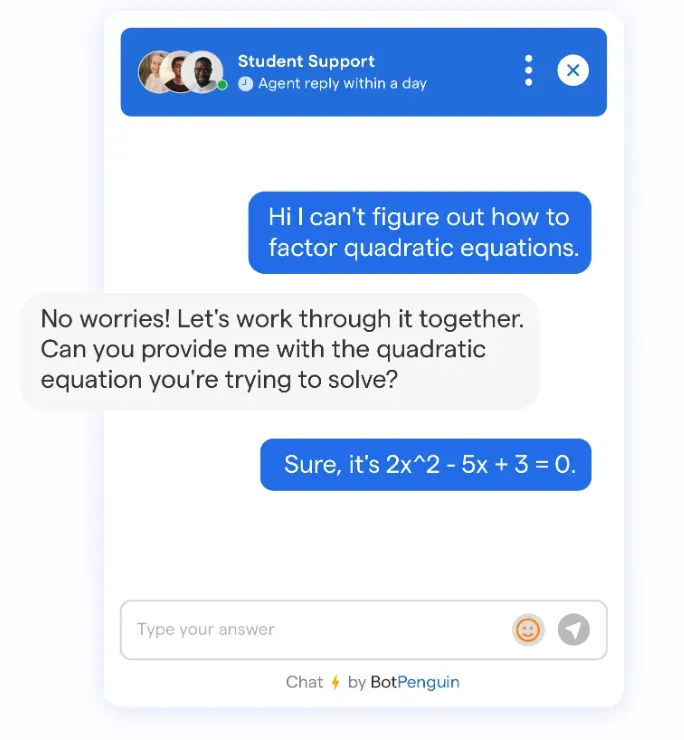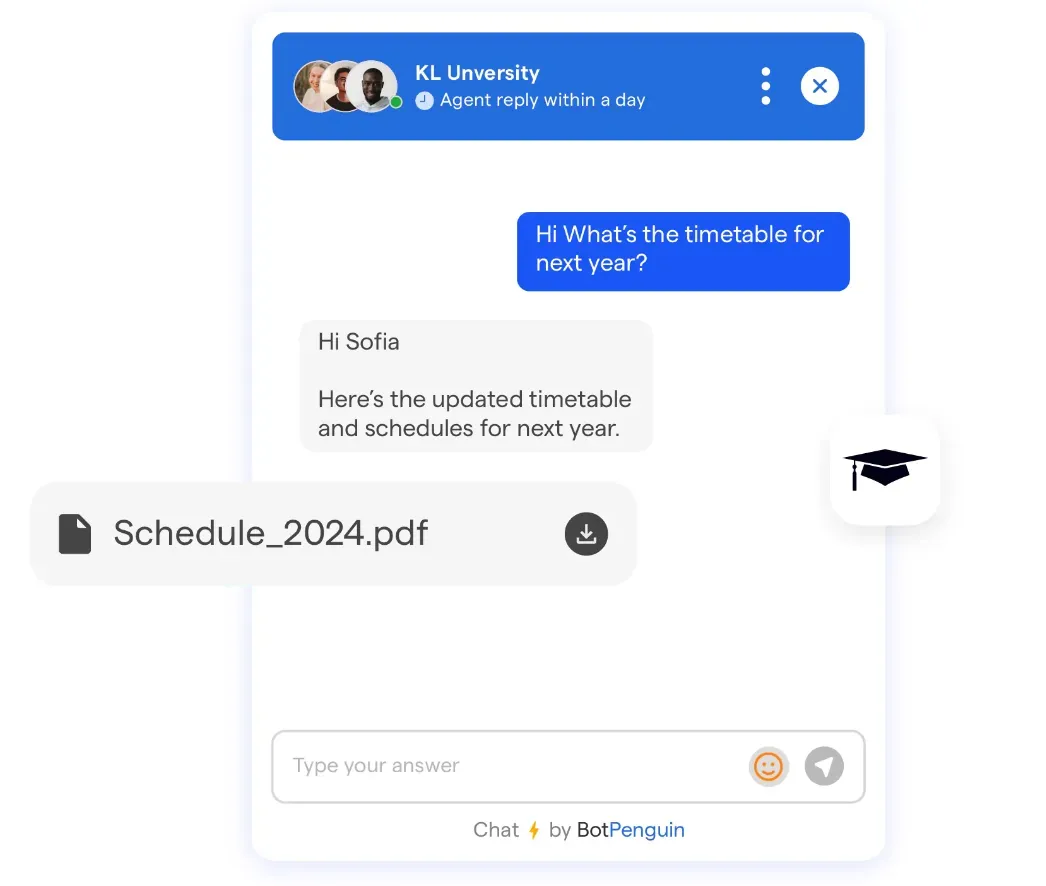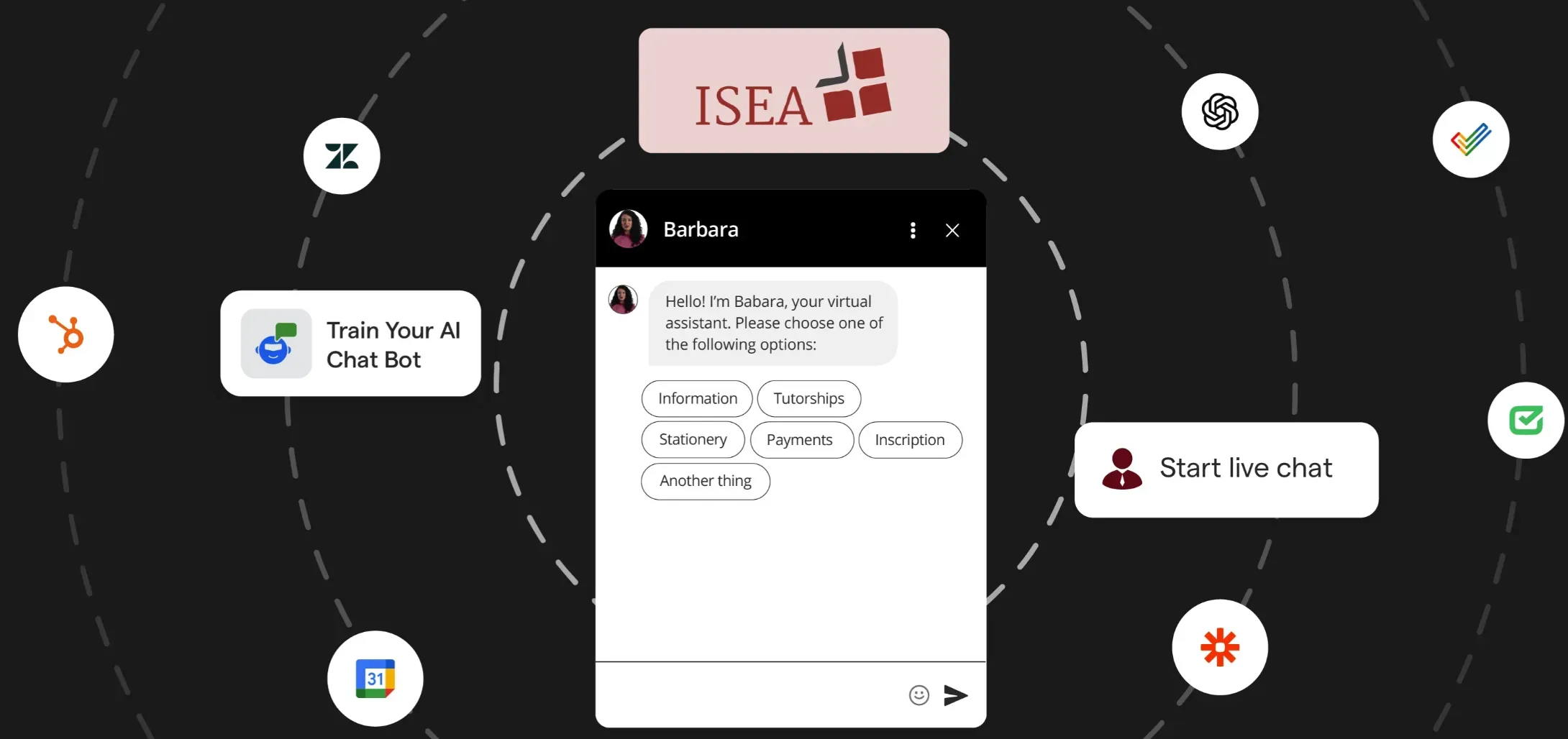Through collaborative platforms, phone apps, and websites. The AI-powered chatbots may have a human-like discussion with the user using natural language. Small and big businesses are now being enhanced by digital transformation, and meaningful change occurs broadly. From big organizations to start-ups, conversational.
Education chatbots are being used to improve business operations in customer service, employee assistance, workflow automation, and staff onboarding. Without access to technology, educational institutions will quickly fail.
Since 2020, academic learning has become increasingly mobile. And educational institutions are looking for new ways to improve student experiences by implementing various digital solutions.
AI education chatbot technology constantly bridges the gap between learning and teaching, allowing for more tailored and efficient instruction. Post-COVID, educational institutions began using virtual admissions, classrooms, and tests. Education Chatbots have proven to be a perfect complement to virtual learning.
With this, let's see how education chatbots help in learning and teaching.
How Do Education Chatbots Help in Learning and Teaching?
Education chatbots play a pivotal role in revolutionizing how we learn and teach. These intelligent virtual assistants utilize artificial intelligence (AI) and natural language processing (NLP) to enhance the learning experience and support educators' teaching endeavors.
Facilitate Student Admission
Utilize an education chatbot to streamline the admission process effectively. Address FAQs, qualify leads, and assist with student registration seamlessly for enhanced enrollment rates and a smoother experience.
Instant Support and Guidance
Education chatbots offer real-time assistance to students, answering their queries promptly. Whether clarifying doubts, explaining concepts, or providing study materials, chatbots ensure that learners have access to the information they need when needed.
Personalized Learning Experience

Chatbots can gather data about individual students, such as their learning preferences, strengths, and weaknesses. Chatbots can use this data to provide personalized recommendations, tailored practice exercises, and targeted feedback, helping students achieve better learning outcomes.
Continuous Accessibility
Education chatbots are available 24/7, allowing students to access assistance and resources anytime, outside traditional classroom hours. This enables self-paced learning and accommodates diverse learning styles.
Automated Grading and Feedback
Chatbots can be trained to grade assignments and provide feedback to students, saving educators valuable time. By automating these routine tasks, teachers can focus on more meaningful aspects of their profession, such as individualized instruction and mentoring.
Support in Homework and Assignments

Education chatbots can assist students in completing homework and assignments by providing step-by-step explanations, guiding them through problem-solving processes, and offering additional resources for further exploration.
Supportive Study Tools
Chatbots can help students with studying techniques, providing tips for effective learning, suggesting time management strategies, and organizing study materials.
Emotional Support
Some education chatbots have sentiment analysis capabilities, allowing them to recognize and respond to students' emotions. By empathetically addressing students' concerns and providing emotional support when needed, these chatbots contribute to a positive and supportive learning environment.
Continuous Assessment and Progress Tracking
Education chatbots can assist in continuous assessment by administering quizzes and tests, tracking students' progress, and providing detailed reports. This facilitates early intervention and personalized intervention strategies.
Overall, education chatbots empower learners, enhance accessibility, and provide personalized support while relieving teachers of administrative burdens and allowing them to focus on facilitating meaningful learning experiences.
How Are Education Chatbots Reshaping the Industry
New-age technology appears to have replaced physical libraries with search engines and produced virtual classes with students worldwide. Read on to find out how chatbots are reshaping the education industry.

Better Teaching Assistance
Education chatbots are virtual teaching assistants available 24 hours a day, seven days a week, to aid students in understanding ideas. They also aid teachers in evaluating test papers and detecting plagiarism and grammatical errors.
Teachers may use education chatbots to automate work and spend more time developing ways to provide high-quality education to their pupils.
Medium of Learning
Automated education chatbots provide a specialized learning environment for students to study in. Then, they analyze their reactions and patterns of engagement with artificially intelligent learning content. This is the most valuable and sought-after use of AI.
Similarly, AI education chatbots can assist students in learning through a sequence of messages, similar to a conventional chat session but based on a lecture. The chatbot will go through the process of analyzing each student's level of knowledge. And then provide them with the subsequent portions of the lecture based on their progress.
Students can get information on specific topics from the chatbot via text messaging or multimedia such as photos, videos, audio, and document files. The chatbot gives students all necessary learning materials, then takes quizzes/tests and presents the findings to their teachers, much like in a classroom. It makes keeping track of student progress easier and speeds up the processes.
Automated administrative works
Various administrative duties in education may be automated with conversational AI. From grading reports to analyzing assignments, AI can help instructors spend more time with their students by automating administrative activities.
Increases Student Engagement

Today's students are far more exposed to technology than we were in the past. Instant messaging, virtual assistants, and social media have turned into their school corridor, where people share messages and study materials, aid one another with tasks, and conduct research.
It has the added benefit of improving their learning process and increasing their interest in specific areas. Consider messaging applications for students and teachers to communicate outside of the classroom, such as between departments, various activity clubs, or alumni organizations.
Education Chatbots Offer Better Student Support
Education chatbots are being trained to deliver more individualized counseling sessions to students and to help them pick the ideal course as technology progresses.
Education chatbots primarily focus on three elements contributing to student persistence: self-efficacy, sense of belonging, and perceived curriculum value.
Chatbots with human oversight can also improve on-campus mental health counseling and assist students in effectively managing their stress.
Education Chatbots Provides Smart Feedback
Whether it comes from a student or is aimed at professors or vice versa, feedback is a crucial element of the learning process. Feedback assists students in recognizing areas where they are weak and demand work. It also allows teachers to find areas where they may enhance their teaching abilities.
Students often use online or paper forms to offer their comments. Whereas the teacher provides spontaneous feedback on the test/assessment administered. A chatbot, on the other hand, may make the entire process easier and more engaging.
Chatbot forms are a fantastic approach to getting student input. These forms might collect information from students about how their course needs to improve, how the last lecture went, or the general quality of their learning experience.
On the other hand, the instructor can offer comments on the exams or tasks that pupils have completed. As an added advantage, the bot gathers all of the comments in one location for the instructor to review, highlighting the most often highlighted points in the feedback.
Suggested Reading:
Real-Life Use Cases of Chatbots
In the above sections, I have discussed different applications of education chatbots. Now, it’s time to see three real-world examples of chatbots for educational institutions.
1. OckyPocky
OckyPocky implemented Live Chat on their mobile app and landing page, fostering seamless communication among parents, children, teachers, and support. They added human handover for personalized assistance and optimized user interactions with conditional chat flows.
Extensive training on FAQs ensures quick responses, enhancing the English learning experience and addressing user concerns effectively.
Platform and Integration-
Mobile App Live Chat | Landing Page Live Chat
2. ISEA Guatemala

ISEA Guatemala boosted enrollment and revenue with Barbara, an AI chatbot. The ChatGPT-driven chatbot manages admission, course inquiries, and consultation scheduling flawlessly. Trained on data, it provides accurate responses. Live Chat connects visitors with agents, while feedback drives continuous improvement.
Platform & Integration-
Website Chatbot | ChatGPT Integration
3. Cyboard Online School
Cyboard School employs a WhatsApp chatbot for admissions leads, FAQs, and 24/7 support. They streamline communication with website chatbots, WhatsApp integration, and live chat. Utilizing conditional flows, FAQs, lead capture, and theme customization ensures a cohesive brand experience.
Platform & Integration
WhatsApp | Website Widget
Education Chatbots: The Bottom Line
The education business is now undergoing a significant paradigm shift away from traditional teaching methods. Even though no AI chatbot can replace a devoted and enthusiastic instructor, it can improve the learning experience.
When it comes to measuring the efficiency of AI-based teaching, selecting the correct chatbot is critical.
BotPenguin’s chatbot maker possesses all of the characteristics that make it an ideal pick to use as a virtual administrative, teaching, or student assistant.
Suggested Reading:
Why Chatbots are the #1 tool to grow your education business
Frequently Asked Questions (FAQs)
What is the primary function of education chatbots?
Education chatbots primarily streamline administrative tasks, provide personalized support, automate grading, and offer continuous accessibility to students.
How do education chatbots benefit students and teachers?
Education chatbots benefit students by providing instant support, personalized learning experiences, and helpful study tools. They also automate grading, save time, and offer better teaching assistance for teachers.
In what ways do education chatbots impact learning experiences?
Education chatbots impact learning experiences by offering personalized learning, continuous accessibility, and real-time assistance. These bots allow students to learn at their own pace and improve steadily.
What are the key features of education chatbots?
Education chatbots offer personalized learning experiences, 24/7 support, automated grading, continuous assessment, emotional support, and personalized feedback to students.
How do education chatbots enhance the education industry?
Education chatbots enhance the education industry by reshaping teaching assistance, providing smart feedback, improving student support, automating administrative tasks, and increasing student engagement.


